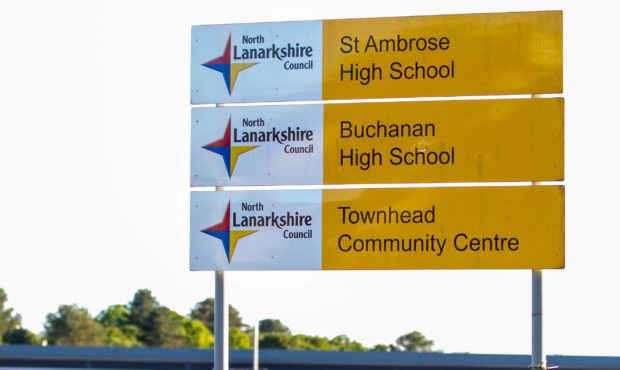
The NASUWT teachers’ union has said that members working at two North Lanarkshire schools will not return to work until it is satisfied it is safe for them to do so.
The union also said that it is pursuing personal injury claims against the council on behalf of a number of its members following the safety concerns raised at Buchanan High and St Ambrose in Coatbridge.
Tomorrow sees the publication of a Government review into the so-called ‘blue water schools’, which were built as part of a shared campus on toxic landfill, just days before teachers and pupils are due to return from their summer break.
In December, staff and pupils at the schools were told not to drink the tap water after it turned blue.
And in May, The Sunday Post revealed four teachers from Buchanan High – three of whom worked in the same corridor – were battling bladder cancer.
The review has been lead by the Scottish Government’s chief planning reporter Paul Cackett and Dr Margaret Hannah, a former director of public health.
It has taken samples of water and soil, and tested the integrity of the methane membrane, installed as a safety measure when the campus was built.
North Lanarkshire Council have repeatedly dismissed health concerns and said the site is safe.
NASUWT members at Buchanan & St Ambrose High Schools in North Lanarkshire will not return to work on the first day of term unless the Union is satisfied that the campus poses no health risks to them. https://t.co/hROKEZhht7
— NASUWT Scotland (@NASUWT_Scotland) August 8, 2019
Commenting ahead of the publication of the report, Ms Chris Keates, General Secretary (Acting) of the NASUWT-The Teachers’ Union, said: “Because of the failure of the Council and the Government to take seriously the concerns of teachers about the health risks of working on the campus, at the end of the last school term the NASUWT implemented strike action to withdraw its members from the site to protect their health and welfare.
“As a result of the action taken by the NASUWT and its members, the Government finally conceded that, as the NASUWT had requested consistently, a full site survey was necessary to provide up to date test results, not only on the ‘blue water’ but also on all aspects of the campus environment.”
The NASUWT will consult with experts to analyse the report once it has been published.
Ms Keates added: “The Council and the Government should be in no doubt that unless the NASUWT is satisfied that the site poses no risks to health our members will not be returning to work on the first day of term.
“Our members’ summer break has been blighted by the serious stress and anxiety of the concerns about the risks to their own and their colleagues’ health.
“All of our members either have sought or are seeking blood tests. The results already received by one member are of deep concern as they show significantly elevated levels of arsenic. That member’s case is now in the hands of our solicitors who are pursuing personal injury claims against the Council on behalf of a number of our members.”
Ms Keates said that the union has notified the council of a period of continuous strike action from the first day of term.
She said: “The NASUWT will also be looking to the report to answer a number of extremely serious questions about how this situation was allowed to develop in the first place.
“Regardless of what the test results say, all the signs of potential risks to the health and welfare of staff and pupils have been evident for a considerable period of time and yet at every stage it seemed that both the Government and the Council had to be dragged kicking and screaming to take any action, exacerbating the anxiety of those working on, and using, the site.
“The NASUWT will be looking for the report published tomorrow to, at the very least, lay down clear procedures for timely action when there are potential risks to health and safety in schools.”

Enjoy the convenience of having The Sunday Post delivered as a digital ePaper straight to your smartphone, tablet or computer.
Subscribe for only £5.49 a month and enjoy all the benefits of the printed paper as a digital replica.
Subscribe